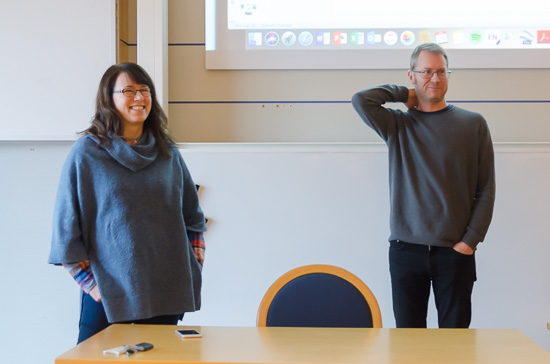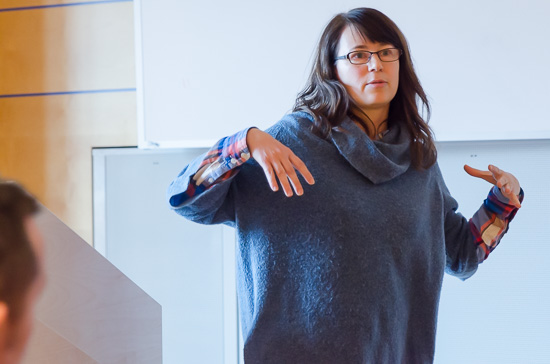SACT has arranged another inspiring Tandem Talk. This Thursday afternoon Jadranka Rota, curator of the Entomological collections introduced Glenn Svensson, researcher at the Pheromone group. And of course, as implied by the words Tandem Talk, Glenn introduced Jadranka.
Jadranka Rota started at the Department of Biology in Lund three years ago. Today she held a very interesting talk about mimicry among Brenthia metalmark moths. It is what can be described as predator mimicry, that is how the moth mimic a jumping spider in order to save itself from being eaten.
The videos she showed us in the Blue Hall revealed how effective mimicry is for the moth when the jumping spider is about to take the leap. For the spider it means something else, probably best summarized with the word ”confusion”.
Jadranka Rota mentioned a couple of reasons why mimicry is common among many groups of insects. Protection is one, evasive prey mimicry another.
Jadranka Rota also talked about the Brenthia larvae. It is surprising how fast it escapes through a hole in a leaf when touched by something.
Glenn Svensson has found his place in the Pheromone group. An inspiring teacher led the way. After taking a course held by Christer Löfstedt he was stuck.
Glenn does research on butterflies and pheromones. The Tandem Talk focused on the role of floral scent in pollination seed-consumption mutualisms. He told us that there are only four examples of active pollination in nature, and that he studies two of them.
One key question he always tries to find the answer to is how the scent is attractive to the pollinators. Amongst other he told us about the Joshua tree pollination in the western part of the USA.
Floral signals are often similar between sexes, Glenn told us. The similarity is a key to ensure pollen transfer. After pollination the floral scent can change.
Thanks alot to SACT, represented by Fredric Carlsson, for an interesting hour in the Blue Hall.
Text by Jan Olsson & photo by Inger Ekström





